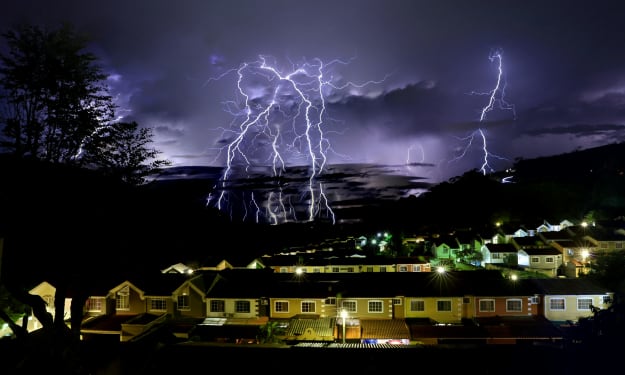From Titanic to Titan Submersible
The Unveiling of Our Grand Visions and the Consequences of Recklessness that Follow
In the chronicles of human history, there are moments that demostrate our insatiable longing for greatness, our unyielding pursuit of greatness beyond the boundaries of ordinary existence. These moments are marked by audacity, ambition, and a deep desire to create something that defies the limitations of the human experience. Among these instances, two stand out as distressing reminders of the edgy balance between human aspiration and the unforgiving forces that lie in wait.
A moonlit night on the frigid waters of the North Atlantic, April 15, 1912. The RMS Titanic, the epitome of opulence and engineering marvel, embarks on its maiden voyage with an air of invincibility. Yet, in a cruel twist of fate, the grandeur of the Titanic would soon be shattered by the piercing blow of an iceberg. The collision rips through the colossal vessel, unleashing a torrent of icy water that infiltrates its hull. Helplessly, the "unsinkable" engineering marvel succumbs to the relentless power of the deep, descending into the abyss with the dreams and aspirations of those aboard.
Fast forward a century, and we find ourselves amid another grand undertaking, this time beneath the waves. The Titan submersible, propelled by the allure of exploring the wreckage of the Titanic, embarks on an audacious expedition. Its crew, driven by a shared fascination with history's watery graves, ventures into the depths of the ocean. But fate has a cruel sense of irony, as the Titan submersible encounters its own tragic demise. A catastrophic failure in its systems cripples the vessel, leaving the crew grappling with an inexorable descent into darkness, their desperate struggles in vain.
The Titanic and the Titan submersible, although separated by time and circumstance, share a common thread—a yearning to surpass the limitations of our existence and witness something greater. The endeavours capture the indomitable spirit of humanity, our relentless pursuit of progress, and our capacity to dream big.
At the same time, the colossal failures force us to reflect on the delicate balance between ambition and prudence. Especially when it concerns the perpetual dangers and unpredictability that lurk in the depths of our massive seas.
In their zeal to create a record of speed on the maiden voyage, the crew onboard the RMS Titanic did not pay heed the iceberg warnings from other ships seriously. The decision of the crew to dismiss iceberg warnings in their pursuit of a record-breaking maiden voyage is a commentary on the human inclination to push boundaries in the pursuit of fame. It unveils the precarious balance between ambition and prudence, the consequences of which were devastating.
The crew onboard the Titanic allowed their enthusiasm to overshadow the importance of caution and the well-being of the ship's passengers. The charm of achieving something extraordinary, of cementing the Titanic's place in maritime history as an unmatched feat of engineering blinded them to the potential dangers lurking in the frigid waters of the North Atlantic.
The crew's disregard for the iceberg warnings not only cost lives but also shattered the illusion of invincibility surrounding the ship. A reminder that the grandest of achievements can be undone by a moment of negligence or a failure to acknowledge the limits of human power.
Similarly, the tragedy of the Titan submersible also highlights the inherent risks and folly that can accompany our relentless pursuit of exploration and discovery. The tragedy points to the fine line between ambition and recklessness, and the need for meticulous planning, preparedness, and prioritization of safety in our grand endeavours.
All in all, both the narratives around accidents in the depths of the seas are telling reminders about our triumphs and failures. They highlight the intricacies of our motivations and confront the profound lessons that emerge from our collective history.
The two incidents show the fragile balance between ambition and prudence and the need for humility and respect for the natural forces that shape our world.
While the sinking of the RMS Titanic prompted significant changes in maritime safety regulations, leading to the establishment of organizations dedicated to preventing disasters and monitoring iceberg danger, and fostering a greater emphasis on preparedness, safety, and the preservation of human life.
Similarly, the present tragedy should help us to shape our approach to maritime exploration and safety a notch higher. It underscores the need for robust safety measures, thorough risk assessments, and the recognition of the unpredictable nature of the sea.
The tragic episodes are a crucial reminder that the pursuit of greatness must be moderated with wisdom, and that the desire to leave a lasting legacy should never overshadow the fundamental responsibility to protect and preserve human life.
About the Creator
Abdul Kuddus
Aspiring writer, learner, dreamer, seeker.
A learning solutions consultant by profession and a writer by passion. In love with words and stories.
Enjoyed the story? Support the Creator.
Subscribe for free to receive all their stories in your feed. You could also pledge your support or give them a one-off tip, letting them know you appreciate their work.







Comments (1)
Simply superb writing. Excellent language. What a way of bringing in the hard truth of ambition and prudence being overpowered by the unknown power.